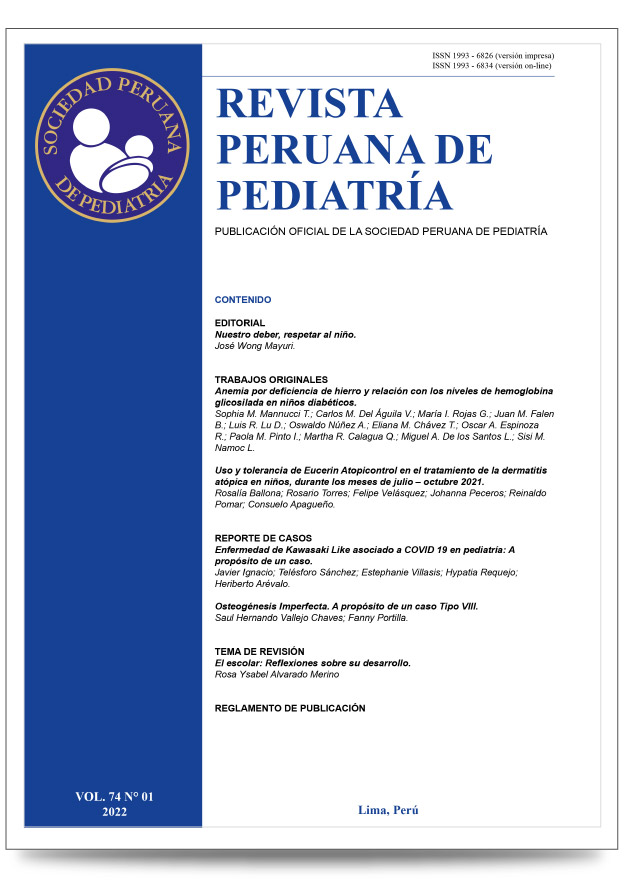Imperfect Osteogenesis. On the purpose of a Type VIII case
DOI:
https://doi.org/10.61651/rped.2022v74n1p30-36Keywords:
Osteogénesis Imperfecta, Bone and Bones, SurvivalAbstract
Classic osteogenesis imperfecta (OI), or “brittle bone disease,” is a connective tissue disorder characterized by susceptibility to bone fractures, blue sclera, and growth failure. The majority (85%) of individuals with OI have autosomal dominant mutations in COL1A1 or COL1A2 that alter the structure or synthesis of type I collagen. Collagen mutations cause a variety of OI phenotypes, from mild to perinatal fatality, described by the Sillence Classification. Autosomal dominant OI has an incidence of 1/15 to 20,000 births, with> 90% of cases resulting from de novo mutations. Mutation “hot spots” in COL1A1 and COL1A2 are associated with independent recurrences of mutations, rather than founder mutations.
Cabral et al. described an autosomal recessive form of OI, which they called OI type VIII, characterized by white sclerae, severe growth deficiency, extreme skeletal mineralization and bulbous metaphyses.
Cabral et al. suggested that defects in LEPRE1 that result in lethal to severe recessive bone dysplasia characterized by white sclerae, severe growth deficiency, extreme skeletal sub-mineralization, and bulbous metaphyses should be classified as type VIII osteogenesis imperfecta.
Downloads
Downloads
Published
How to Cite
Issue
Section
Categories
License

This work is licensed under a Creative Commons Attribution 4.0 International License.
Authors will retain the copyright and grant the right to publish their work in the journal while allowing third parties to share it under the Creative Commons Attribution license.
Articles are published under a Creative Commons license that allows sharing and adaptation with appropriate credit. CC BY 4.0 license. Available in English at https://creativecommons.org/licenses/by/4.0/
Authors may use other information disclosure formats as long as the initial publication in the journal is cited. The dissemination of the work through the Internet is recommended to increase citations and promote academic exchanges.
The published content does not necessarily reflect the specific point of view of the journal, and the authors assume full responsibility for the content of their article.




